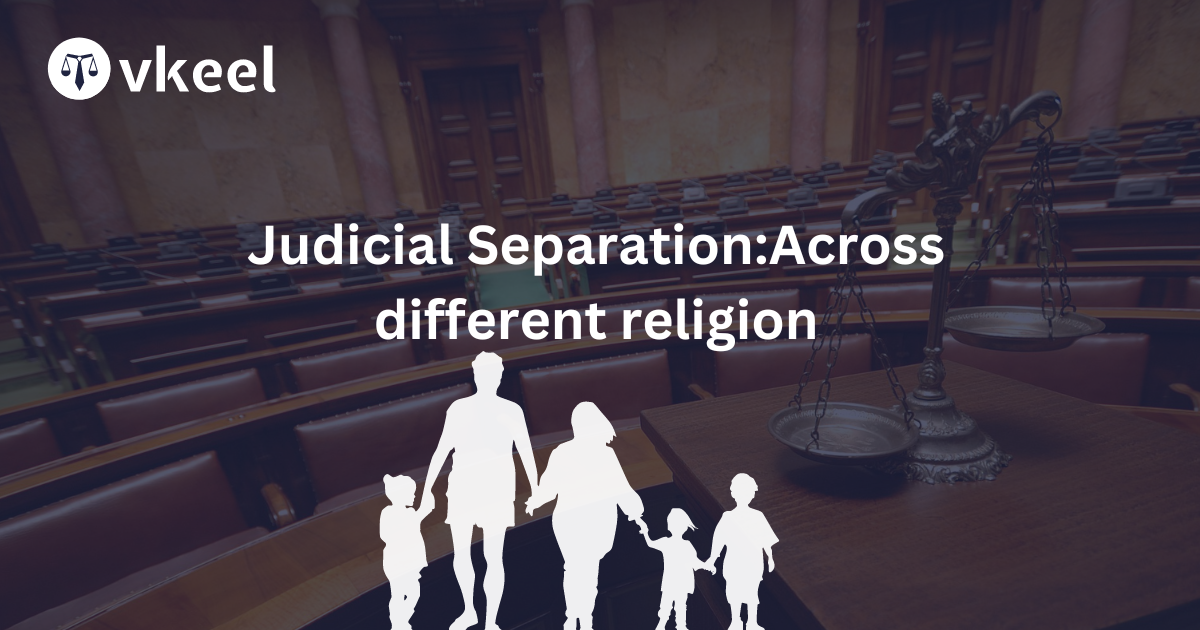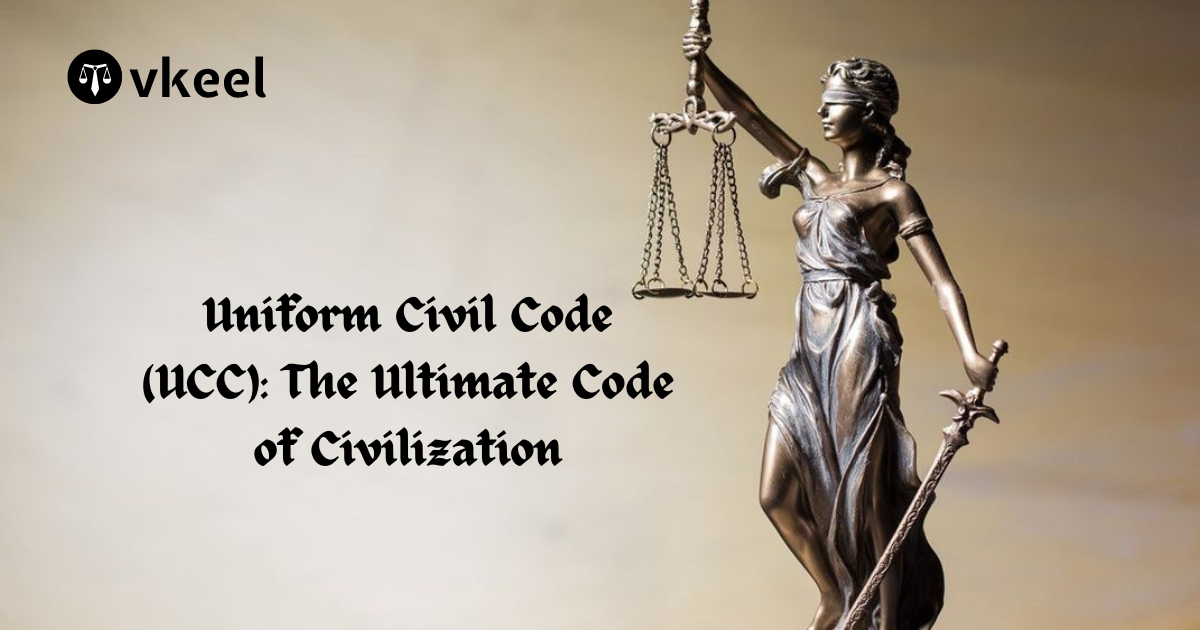Judicial Separation: Across different religions
By Himanshu Kumar
Table of Contents
Introduction
Judicial separation is a state of relations between husband and wife when they are under no obligation to live together or to perform marital obligations for each other. It is temporary suspension of marital rights between the spouses as a result of decree passed by the court on any of the grounds mentioned in the the Section 13(1) and 13(2) of the Hindu Marriage Act.
During the course of judicial separation , either party may be entitled to get maintenance from the other if the situation so warrants. But during this period the husband or th wife would not acquire the competence to marry afresh . The right of fresh marriage would be available to them only after dissolution of marriage.
Section 10 provides that either party to marriage may present a petition praying for decree of judicial separation on any of the grounds specified in sub-section(1) olfl Section 13 and in case of wife also on any grounds specified in sub-section (2) thereof, as grounds on which a petition for divorce might have been presented.
In the realm of family law, judicial separation serves as a pivotal lega; remedy providing couples with an alternative to divorce while allowing them to live separately. This legal concept avries in interpretation and application across different religions , reflecting unique societal norms , religious beliefs , and legal framework. This article delves into meaning , characteristics and case laws surrounding judicial separation within the contexts of major religion.
Definition, Meaning and Characteristics of Judicial Separation
Judicial separation refers to a legal process where a court grants a decree formalizing the separation of a married couple. Unlike divorce , judicial separation does not dissolve the marriage but recognizes the spouses decision to live apart while addressing related issues such as financial arrangements, child custody and property division. It serves as a potential precursor to divorce , allowing couples time apart to evaluate their relationship before making final decisions.
The decree of judicial separation does not terminate the marriage, but the decree of judicial separation results in termination of marriage and the [arties no longer retain the status of husband and wife. After the decree of judicial separation, the rights and obligations of the spouses remain suspended. However, the marriage subsists and neither party becomes free to remarry with a third person.But since the decree of divorce dissolves the marriage, the parties to such decree become free to remarry after the passing of such decree.
Key characteristics of judicial separation include:
Legal Recognition: A formal decree by a court recognizing the separation.
Not a Divorce : The marital status remains intact, prohibiting remarriage.
Settlement of Issues: Addressing matters like custody, support and property rights.
Potential Reconciliation: The door remains open for reconciliation without remarrying.
Judicial separation in Christianity
In Christianity, the concept of marriage is deeply rooted in biblical teachings and traditions. The institution of marriage is regarded as a covenant between a man, a woman, and God, intended to be a lifelong commitment. However, recognizing the complexities of human relationships, Christian jurisprudence allows for legal remedies when marriages encounter insurmountable challenges.
Judicial separation, also known as legal separation, is a legal process through which married couples formalize their decision to live apart while remaining legally married. Unlike divorce, judicial separation does not terminate the marriage bond but provides a framework for resolving issues such as custody, support, and property division.
The legal basis for judicial separation in Christianity varies depending on the jurisdiction and denomination. In many Christian-majority countries, family law statutes incorporate provisions for judicial separation, often reflecting the principles of equity, fairness, and the preservation of family judicial separation, often reflecting the principles of equity, fairness, and the preservation of family values.
Judicial separation in Hinduism
In Hinduism, marriage is regarded as a sacrament (samskara) that binds two individuals spiritually, emotionally, and legally. The Hindu Marriage Act, 1955, governs marital relationships among Hindus, outlining the legal framework for various aspects of marriage, including judicial separation.
Judicial separation under Hindu law allows married couples to live apart while maintaining their marital status. Unlike divorce, which dissolves the marriage entirely, judicial separation offers a middle ground, providing couples with time and space to reassess their relationship while addressing practical concerns such as custody, support, and property division.
The principles underlying judicial separation in Hinduism reflect a balance between the sanctity of marriage and the recognition of individual rights and welfare. Hindu jurisprudence emphasizes the importance of preserving family harmony (samajik santi) while acknowledging the realities of human relationships and the need for legal remedies in cases of irretrievable breakdown.
Judicial separation in Islam
Islamic law, or Shariah, provides the legal framework for marriage and family matters within the Muslim community. The Quran and the Sunnah (teachings and practices of the Prophet Muhammad) serve as primary sources of Islamic jurisprudence, guiding believers on matters of personal conduct, including marriage and divorce.
In Islam, marriage is regarded as a contract (nikah) between a man and a woman, solemnized with the consent of both parties and witnessed by competent authorities. While divorce is permitted in Islam as a last resort, judicial separation serves as an interim measure, allowing spouses to live apart while maintaining their marital bond.
The legal principles underlying judicial separation in Islam emphasize fairness, justice, and the preservation of family harmony. Shariah courts adjudicate cases of marital discord in accordance with Islamic law, considering the welfare of spouses and children while upholding religious and cultural values.
Judicial separation in Parsi
Parsi law draws upon religious scriptures, customary practices, and statutory enactments to govern marriage and family matters within the Parsi community. The Parsi Marriage and Divorce Act, 1936, serves as the primary legislation regulating matrimonial relationships, including provisions for judicial separation.
Under Parsi law, marriage is considered a solemn contract (Aeena-e-Bain) between a man and a woman, entered into with mutual consent and solemnized in accordance with prescribed rituals. Judicial separation, also known as legal separation, allows spouses to live apart while remaining legally married, providing an alternative to divorce for couples experiencing marital discord.
The legal principles underlying judicial separation in Parsi law emphasize fairness, equity, and the protection of individual rights. Courts adjudicate cases of marital discord with a view to preserving the sanctity of marriage while ensuring the welfare of spouses and any children involved.
Amendments and Recent Developments.
Legal framework surrounding judicial separation continue to evolve globally, influenced by societal changes and emerging perspectives on marriage and family. Amendments often aim to streamline procedures, protect vulnerable parties, and balance religious freedoms with civil rights.
For instance, recent amendments in various countries focus on:
Simplified Procedure: Facilitating faster and less adversarial processess.
Mediation and Counseling: Encouraging alternative dispute resolution methods.
Equal Rights: Ensuring equitable treatment regardless of gender or religion.
Conclusion
Judicial separation represents a significant legal recourse for married couples across diverse religious and cultural landscapes. Its application varies widely, reflecting unique religious doctrines ,legal traditions and societal norms. By examining judicial separation through the lens of different religions , we gain insights into the complex interplay between law, faith and personal relationships. This understanding underscores the importance of nuanced legal frameworks that respect individual beliefs while promoting fairness and justice within families. As societies continue to evolve , ongoing dialogue and legal reforms will shape the future of judicial separation within religious contexts.
Disclaimer:
The information provided in the article is for general informational purposes only, and is not intended to constitute legal advice or to be relied upon as a substitute for legal advice. Furthermore, any information contained in the article is not guaranteed to be current, complete or accurate. If you require legal advice or representation, you should contact an attorney or law firm directly. We are not responsible for any damages resulting from any reliance on the content of this website.










